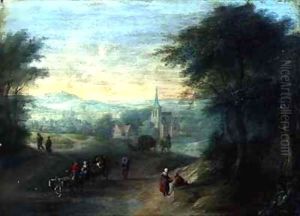Jacques Willem Blarenberghe Paintings
Jacques Philippe Le Bas, also known as Jacques Philippe Lebas, was a prominent French engraver born on November 29, 1707, in Paris, France. He was a leading figure in the development of the French engraving tradition during the 18th century. Le Bas was the son of a valet and began his artistic training early in his life. He was a pupil of the engraver Nicolas-Henri Tardieu, but he also learned much from his own diligent studies of the works of the old masters and contemporary artists.
During his career, Le Bas mastered both the technique of line engraving and that of engraving in the 'manière de crayon,' which imitates the look of chalk drawings. He became a member of the Académie Royale de Peinture et de Sculpture in 1751 and later served as the curator of the Cabinet des Estampes at the Bibliothèque Royale, the position that would become part of the Bibliothèque Nationale de France.
Le Bas was highly productive, and his oeuvre includes over 400 plates, ranging from landscapes and marine scenes to historical events and everyday life. His engravings after the works of artists like Teniers, Wouwerman, and Berghem were particularly appreciated. He also collaborated with other artists such as Claude Joseph Vernet on a series of engravings depicting the ports of France, which were commissioned by King Louis XV.
Le Bas's engravings were widely disseminated and contributed to the spread of French taste and artistic ideas across Europe. He trained many pupils who would continue the tradition of French engraving into the following generation. His influence extended beyond his lifetime, as his works were collected and studied by artists and connoisseurs alike.
Jacques Philippe Le Bas died on April 23, 1783, in Paris. His legacy is preserved in the collections of numerous museums and libraries, where his engravings continue to be admired for their technical mastery and their contribution to the art of engraving.
